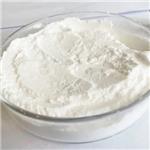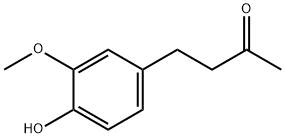Vanillylacetone: Neuroprotective and Hepatoprotective Potential
Vanillylacetone, also called Zingerone, is a key component of the pungency of ginger, but imparts the sweet flavor of dry or cooked ginger. There are extensive data that have paved the way for zingerone to become the subject of clinical trials. Vanillylacetone tempered key signaling pathways important in many cellular processes. Numerous mechanisms of action have been elucidated. A fundamental issue addressed by scientist deals with the role exerted by redox-derived reactive species. Vanillylacetone acts as antioxidants, recent evidence supports the idea that zingerone primarily acts on reactive oxygen species, free radicals, and also antioxidant sparing activity to elicit a positive, beneficial response from cells. Apart from the redox properties, zingerone has known pharmacological and biological activities including anti-inflammatory, anticancer, antimicrobial activity, and hepatoprotective activity. This chapter focuses on the antioxidant potential of zingerone (ginger extract), pharmacokinetics and pharmacodynamics of zingerone, and hepatic and gastrointestinal tissues protection by the zingerone.

Vanillylacetone attenuates cadmium chloride-induced hippocampal damage and memory loss
Exposure to environmental toxins is associated with an increased risk factor for developing several neurological disorders. Cadmium (Cd) ion is one of the most known toxic heavy metals abundantly found in soil, tobacco smoke, vegetables, fruits, batteries, and other industrial and commercial products, therefore having different routes of entry into the body. The role of plant polyphenols in preventing oxidative stress-induced neurodegeneration has garnered significant attention in recent decades. Vanillylacetone (also known as zingerone) is isolated from the ginger plant (Zingiber officinale) and is commonly used as a food flavoring. Vanillylacetone possesses numerous health benefits, including hypoglycemic, hypolipidemic, insulin-sensitizing, antioxidant, and anti-inflammatory effects (Zhu et al., 2021). In several animal models, the protective roles of vanillylacetone have been demonstrated against neural, hepatic, renal, and cardiac damage. These protective effects are attributed to scavenging ROS, improving mitochondrial structure and function, upregulating antioxidants, suppressing the production of inflammatory cytokines, and activating Nrf2 (Anand and Dhikav, 2012). This study showed that daily dietary administration of vanillylacetone mitigated hippocampal damage and memory loss induced by CdCl2 in adult rats. It can be suggested that the preferred mechanism of action of vanillylacetone involves at least the suppression of oxidative stress and inflammation, mainly through the upregulation of Nrf2.[1]
The findings of this study demonstrate that daily dietary supplementation with vanillylacetone is highly effective in mitigating CdCl2-induced hippocampal damage and memory loss in rats. This is achieved by suppressing hippocampal oxidative stress, inflammation, and intrinsic cell apoptosis. Additionally, these effects are mediated by the activation of Nrf2, downregulation of Bax and caspase-3, and upregulation of Bcl2. However, the concomitant administration of brusatol, a selective Nrf2 inhibitor, was able to reverse the neuroprotective structural, biochemical, and learning effects afforded by vanillylacetone. Similarly, it prevented hippocampal damage and improved learning abilities during the MWM in rats exposed to focal ischemia by stimulating GSH and antioxidant levels, including SOD and CAT. The reduction in escape latency of the MWM in epileptic mice after treatment with it was attributed to the reduction in oxidative stress, inflammation, and neural cell apoptosis. In conclusion, our data demonstrated the neuroprotective potential of vanillylacetone against CdCl2-induced hippocampal damage and memory loss in mammals. Besides, these data open a horizon for future pre-clinical and translational studies to investigate the possibility of using it to manage neurodegenerative disorders related to oxidative stress and reduced levels of Nrf2.
Therapeutic potential of Vanillylacetone against CCl4 induced hepatotoxicity
The aim of this research was to investigate the therapeutic potential of Vanillylacetone against carbon tetrachloride (CCl4) induced hepatotoxicity in mice through understanding the serum marker, oxidative stress mechanism and cytokine networks. Carbon tetrachloride is highly hepatotoxic used as research based on animal model. The mice were classified into five groups and each had eight mice. The administration of Vanillylacetone (50 and100 mg kg−1) significantly suppresses the elevated serum enzymes, oxidative stress (TBARS), an inflammatory cytokine (IL2 and TNFα) and apoptotic markers (Caspase-3 and 9) in Group-III and IV as compared to Group-II. It was also noticed that the higher dose is more effective than lower dose. There were no significant changes observed with higher dose of Vanillylacetone (100 mg kg−1) in Group-V as compared to Group-I. Histopathological analysis also supported the above findings. Overall, this results shows that Vanillylacetone has a good antioxidant and therapeutic properties which can help in preventing the chemically (CCl4) induced hepatotoxicity.[2]
References
[1]Al-Hashem FH, Bashir SO, Dawood AF, Aboonq MS, Bin-Jaliah I, Al-Garni AM, Morsy MD. Vanillylacetone attenuates cadmium chloride-induced hippocampal damage and memory loss through up-regulation of nuclear factor erythroid 2-related factor 2 gene and protein expression. Neural Regen Res. 2024 Dec 1;19(12):2750-2759. doi: 10.4103/1673-5374.391300. Epub 2023 Dec 21. PMID: 38595292; PMCID: PMC11168521.
[2]Alam, Mohammad Firoz et al. “Therapeutic potential of Vanillylacetone against CCl4 induced hepatotoxicity by suppressing the serum marker, oxidative stress, inflammatory cytokines and apoptosis in Swiss albino mice.” Experimental and molecular pathology vol. 105,1 (2018): 81-88. doi:10.1016/j.yexmp.2018.06.001
You may like
Lastest Price from Vanillylacetone manufacturers

US $10.00/KG2025-04-21
- CAS:
- 122-48-5
- Min. Order:
- 100KG
- Purity:
- 99%
- Supply Ability:
- 100 mt

US $1000.00-800.00/kg2025-04-21
- CAS:
- 122-48-5
- Min. Order:
- 1kg
- Purity:
- 99%
- Supply Ability:
- 5000


